




































Ok, so it took less than 6 weeks to start moaning about the heat!! Last month I said it was ‘refreshing’, now, I just pray for rain as I am about as fresh as a camel in the desert.

And before anyone tells me off for dissing the weather, I’m the biggest fan of warm weatheras long as I don’t have to work during the day and I have aircon in my room at night! Anyway, I remortgaged the house at approx. 1000% to enable me to purchase a cooling fan and that seems to be doing the trick for now.
In other news, I’ve had a bit of a month! Had a lovely break away with some of our oldest friends to celebrate all our 39+1 birthdays. We came home, collected the dogs, put a wash on, ate dinner, kicked back with a glass of something cool – then a mahoosive pigeon takes off from the tree in our garden, followed by a huge cracking sound, followed by the tree falling towards the house!! Not quite the welcome home we were anticipating! We were so fast in our reactions, we managed to reach the edge of the sofa before it came to a stop, just shy of the house thankfully!! Anyways, after some family and friends help to clear it and then a tree surgeon to remove the rest of the very ropey looking tree (not before several discussions with Mr Emily about why we can’t just buy a chainsaw and do it ourselves #eyeroll), all is well with the world again. Although my poor beautiful Acer was a casualty, but we think/
hope she can be saved and regain her glorious form in future years!
Oh and Mr Emily has (after 25yrs) finally talked me into picking up a hockey stick again and attending Mansfield & Ashfield Aztecs Hockey Club summer rush hockey. They are great clubs and they are doing some great initiatives for everyone of all ages over the summer, so I highly recommend. My only word of caution, which I am disgracefully and not remotely coming to terms with, is that my 39+1 body of a tubby cherub, apparently refuses to accept what is being asked of it and throwing, what can only be described as, ‘a wobbler’ every time I ask it to do something physical! Who knew that the new ‘Eau de Parfum’ of the 39+1 club is Deep Heat!!
Anyhoo, I hope you enjoy watching the Women’s (football) World Cup this month – based on the success of England’s ladies at the Euro’s last year, it should be good viewing.
Oooh and don’t forget to take a look at our ‘Summer Sizzler’ to help you entertain the kids/grandkids this summer – it’s a good one

Happy reading,


Women’s football has come a long way in the past few years hasn’t it? In fact I heard a male commentator actually describe the English team as “European Cup Winners” without prefacing the statement with “ladies”.
It may seem that the women’s game is a relatively new thing - at least so far as popularity is concerned, but there is in fact a somewhat “hidden history”, let me explain.
From the late 18th century there are reports describing annual football matches involving the fisherwomen of Musselburgh and Inveresk in Scotland. These matches would have been informal, with no ratified rules - as was true in the men’s game at this point.
The Football Association came into being in 1863, and by the late 19th century women wanted to establish their own teams and leagues. The earliest known match was played at Easter Road, Edinburgh, in May 1881. It was an international match between Scotland and England with Scotland winning 3-0.
The popularity of the women’s game grew…as did the resistance to it! Check out this quote from the London Daily News, 5 March 1895:
It is a great game, and a manly game, and deservedly popular. It must not, however, be forgotten that it was originated and improved by strong young men, and only by strong young men can it with any safety be regularly played
In the face of such misogyny women’s football faded away for a while, only to stage a dramatic resurgence during WW1. With the men’s game suspended, the FA allowed the women’s game to use the facilities and grounds of their male counterparts and attendances soared. Tens of thousands of people attended matches across the UK raising funds for effort in the process.
After the war the popularity of the women’s game was seen as something of a threat to the men. Equivalent men’s games drew much smaller crowds than the women. There were even claims that the ladies were using charity fundraising (millions was raised during the war) to pay the players - a claim strenuously denied.
In December 1921 the FA banned all female footballers from playing and using league pitches and facilities. The financial allegations were cited as the reason, but as the following
comment was recorded, I think we can safely say that at the heart of the issue was the male ego.
Complaints having been made as to football being played by women, Council feel impelled to express their strong opinion that the game of football is quite unsuitable for females and should not be encouraged.
And that could have been that, except ladies football proved popular throughout the world and thus continued. The home nations have now (gratefully) re-embraced women footballers and the game is arguably even more popular than in the early 20th century.
With the Lionesses currently champions of Europe, who can discount them becoming World Champions in this summer’s World Cup taking place in Australia and New Zealand?
Football may finally be coming home, AFTER ALL, LIONESSES ARE THE HUNTERS!





YOU CAN MERGE SQUARES TOGETHER AND ALL YOU PAY FOR IS THE SQUARES THAT YOU USE

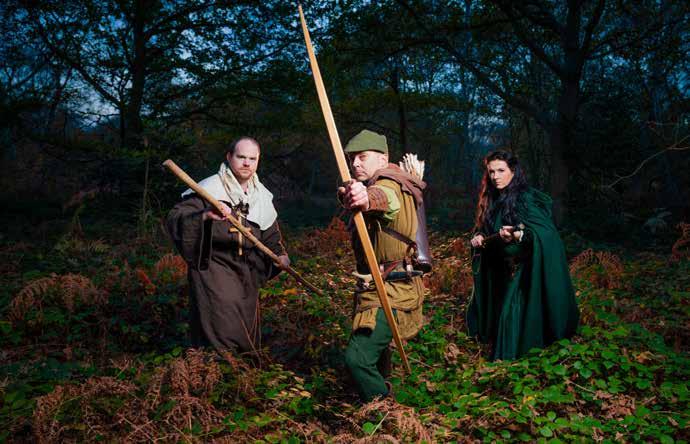


















Treat yourself to a luxury break at the 4* Gold Award winning Little Red Hen House. An elegant and cosy holiday home just a 7 minute drive from award-winning and dog-friendly Warkworth beach.
✽ 2 spacious en-suite bedrooms


✽ A fully enclosed garden

✽ 2 small to medium dogs welcome (3 upon request)
✽ Fully equipped kitchen, including an American style fridge freezer
✽ Perfect for exploring the stunning Northumbrian Heritage Coastline


✽ Close to a range of dog friendly pubs, cafes and restaurants in stunning Warworth
✽ We have fast fibre Wi-Fi and smart TV’s



Search ‘The Little Red Hen House’ at:
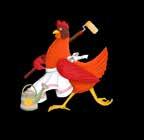

please call the team on 01773 549 035

This decline is a likely result of the ravaging effects of a recent wave of Dutch elm disease which has affected all of the UK’s elms, killing many mature trees and preventing new trees from growing. Despite its name, the English may well have been introduced into the UK during the Bronze Age, or may only be native in Southern England. Those that do survive send out new shoots and eventually regrowth occurs. If the dreaded disease appears then anything above 2 meters will be affected once more, giving little chance for the towering elms trees we once knew.
Elms can be recognised by their asymmetrical, oval leaves that are toothed around the edges and have very short stalks; they also produce winged fruit.The English elm has smaller, rounder leaves than wych elm.
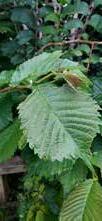


Widespread but scattered distribution in England and Wales and now commonly found more as a hedgerow bush. Often found on farmland, townscapes and mixed woodland environs.



Historically, elms have been regularly associated with death, perhaps due to their readiness to drop massive branches without warning, or due to the use of their wood for coffins.

The disease (Dutch elm disease DED) devastated elms throughout Europe and much of North America in the second half of the 20th century. It derives its name “Dutch” from the first description of the disease and its cause in the 1920s by Dutch botanists Bea Schwarz and Christina Johanna Buisman. Owing to its geographical isolation and effective quarantine enforcement,Australia has so far remained unaffected by DED, as have the provinces of Alberta and British Columbia in western Canada.
DED is caused by a microfungus transmitted by two species of Scolytus elm-bark beetles, which act as vectors. The disease affects all species of elms native to North America and Europe, but many Asiatic species have evolved antifungal genes and are resistant. Fungal spores, introduced into wounds in the tree caused by the beetles, invade the vascular system. The tree responds by producing something called tyloses, effectively blocking the flow from roots to leaves.
Mature English elms were once common on the rich, farmed soils of middle England, but are now rarely found as trees and are more common as hedgerow shrubs.
























1. Cook the pasta according to the pack instructions, then drain and return to the pan, reserving 100ml of the pasta cooking water.
2. Meanwhile, spray a wide non-stick frying pan with low-calorie cooking spray and place over a mediumhigh heat. Add the salmon chunks and cook for 1-2 minutes or until just cooked, stirring occasionally. Transfer to a plate.
3. Add the peppers, garlic and green beans to the frying pan and cook for 6-8
For more information visit www.slimmingworld.co.uk

Fresh, light and tempting. This dish is perfect for a Summer picnic or as a delicious dinner.
minutes or until tender and lightly charred, stirring often. Add to the salmon cubes and mix gently.
4. Toss the salmon mixture through the pasta and stir in the fromage frais, lemon zest, chopped watercress and as much of the pasta water as you need to make a good sauce. Season lightly and divide between plates or shallow bowls. Scatter over the reserved watercress sprigs and serve with the lemon wedges for squeezing over.
Serves: 4
Ready in: 25 mins
Ingredients:
• 500g dried fusilli pasta
• Low-calorie cooking spray
• 4 skinless and boneless salmon fillets, cut into bite-size chunks
• 2 peppers (any colours), deseeded and chopped
• 1 garlic clove, crushed
• 300g green
beans, trimmed and halved
• 100g fat-free natural fromage frais
• 1 large unwaxed lemon, zested and cut into wedges
• Small bag of watercress, a few sprigs reserved, the rest chopped
Syns per serving: FREE












• Nail trimming & reduction
• Hard skin reduction


• Corn removal
• Verruca treatment




• Diabetic advice
IN BUSINESS FOR 10
Prices from £17
To arrange an appointment please call: Robert Cauldwell







This month’s walk is one of my favourites and perfect for a nice summers day. The walk begins at the Creswell Crags Museum Car Park, where there is a nice café if you need refuelling before or after the walk. We head east past the Welbeck Estate across Gouldsmeadow Lake and into White Deer Park before bearing north. Upon reaching the edge of Worksop Manor Park we turn east bearing towards Hodthorpe and then back south towards Cresswell


A medium length walk which should take you and your dog around 3-4 hours to complete. There are a few short sections of road so please take care. Most of the walk is on paths and trails but please wear appropriate footwear and please follow the countrys

1. With your back to the car park entrance walk to the far end to pass a memorial on your left. Ignore a bridleway on your left and walk ahead through a small wooden gate and along a lane.

2. After some distance pass through a small wooden gate to reach a road. Cross over and pass through a gap adjacent to a large metal gate and continue along a tarmac lane and signposted bridleway.
3. After some distance pass a stone house and a marker post on your right. Cross a crossroads of lanes and pass a marker post on your left.

4. After some distance, at a yellow marker post on your right follow the arrow to turn 90 degrees left. Walk along a grassy path with trees on your right and open views on your left.

5. After the trees end continue with a fence on your right. When the fence ends continue ahead with trees on your right and then eventually trees on both sides. Walk through the trees until you reach a T junction of paths with a yellow marker post on your right.
6. Turn right to continue along a lane. After a short distance at a T junction turn left to follow the arrow







Summer is blooming and so is our business so we are branching out!

Due to a huge increase in desire for our beautiful creations, which are designed by our highly skilled florists, we are now sending our fantastic flowers countrywide!

Watch out for our website coming soon. For now, please give us a call on 01623 553736

The Major Oak is the biggest oak tree in Britain and is thought to be between 800 and 1,000 years old. The world-famous tree weighs an estimated 23 tonnes, has a girth of 10 metres (33ft) and boasts an impressive canopy that reaches a whopping 28 metres (92ft). Legend has it that the mighty oak not only provided Robin Hood with shelter, it was also the place where he and his Merry Men hid and camped on their adventures.
15 minute walk from the Sherwood Forest Visitor Centre


Rafa has Rambled around here, check out his walk from our back issues!
16TH SEPTEMBER 2023
MARKEATON PARK, DERBY RUN, WALK OR DANCE THROUGH A 5K COLOUR EXPLOSION!

REGISTER NOW!
ADULT: £25 CHILD: £12.50

Please call 01332 788 861 or emailuhdb.charity@nhs.net www.bit.ly/DBHCcolourrun2023













With strawberries, creamy yogurt and crushed meringue, the sweet and simple SLIMMING WORLD ETON MESS recipe is like summer in a bowl!
1. Roughly chop the strawberries, place half in a blender and purée until smooth. Transfer to a bowl with the strawberry yogurt and stir to mix well.
2. Place the remaining chopped strawberries in a bowl, add the fromage frais and sweetener and stir to mix well. Add this mixture to the strawberry purée mixture and swirl through to create a marbled effect.
3. Fold in the crushed meringue and divide the mixture between 4 chilled dessert glasses. Serve immediately, decorated with chopped strawberries.
400g strawberries, plus a few finely chopped strawberries to decorate
320g any no-added-sugar, fat-free strawberry yogurt
400g fat-free natural fromage frais
1 level tbsp sweetener
4 meringue nests, roughly crushed
3½ Syns per serving
10 minutes
Serves 4

on a yellow marker post. After a short distance and upon reaching a large metal gate directly in front of you, turn left following the arrow on a yellow marker post.
7. Walk along a stone path with Gouldsmeadow lake on both sides. When the stone path ends continue along a footpath crossing through open fields in White Deer Park until reaching some trees.
8. Pass a yellow marker post on your left and then pass through a small wooden gate. Immediately after, turn right following the arrow on a marker post. Pass through a small wooden gate and then turn immediately left following a sign for a bridleway.
9. Pass a house on your left, then upon reaching a T junction of paths, ignore the signposted bridleway to the right and turn left. After a very short distance turn right through a small wooden gate adjacent to a large wooden gate along a signposted footpath to ‘Worksop’.

10. You will pass a house on your right and then along the footpath through woodland. Eventually the path turns into a lane and after some distance you will exit the woodland. Keep ahead along a lane with a hedge on your right and open fields on your left, then with a hedge on both sides.

11. After some distance, at a crossroads of lanes, turn left along a lane with a hedge on both sides. Upon reaching a large wooden gate directly in front of you turn left to cross over a stile.
12. Continue with trees on your right and open fields on your left. After a short distance turn right onto a marked path to cross over a wooden footbridge. Look carefully as it may be a bit hidden. Then walk up some steps and then continue with trees on your right and open fields on your left.
13. Keep ahead to pass through a large gap from this field to the next. Immediately after a wooden gate turn right to pass through a gap in the hedge to follow a signposted footpath. Continue along the edge of the field then after some distance turn 90 degrees left following a signposted footpath to cross an open field.
14. Upon reaching a T junction with a lane turn right and then left to pass through a gap in a hedge. Keep ahead to cross an open field. At the far side cross over a stile onto a main road. Cross straight over the main road and then pass through a metal gate into a field.
15. Continue straight, across an open field going gently uphill. At the far side pass through a metal gate and then continue along a lane. Pass 2 houses on your right then ignore the footpath ahead of you and follow the lane around to the left. Continue along the lane going downhill to a road.
16. Turn right along the road and just after passing a 7.5t weight limit sign, turn left along a lane passing a signboard for ‘Hall Leys Farm’. Follow the lane as it bends sharp to the right then turn left along a signposted footpath to cross an open field.
17. Pass through a gap in a hedge to cross another open field. At the far side of the field pass through a gap in the hedge to cross another open field. At at the far side of the field cross over a footbridge and pass through a gap onto a road.
18. Cross the road to continue along a single-track road and signposted footpath, passing houses on both sides until reaching a T junction of roads. Turn right. The road turns into a lane and then narrows into a footpath and you will pass a wooden footbridge on your right.
19. Continue with a stream on your right for a short distance, then turn left through a gap, onto a footpath. Follow the path sharp left, then sharp right and downhill.
20. At the bottom continue with a fence on both sides, then follow the path sharp to the right to continue with a fence on the right and a hedge on the left. Upon reaching a large metal gate directly in front of you turn left through a small wooden gate, cross straight over a road and pass through a gap adjacent to a large wooden gate onto a lane.
21. After some distance the lane turns into a footpath and eventually you will reach a main road. Turn right and after a short distance turn right along a lane and signposted bridleway. Pass through a small wooden gate adjacent to a large metal gate and continue along the lane.
22. After some distance pass through a small wooden

This walk is for illustrative purposes only. Voice Magazines Ltd takes no responsibility for anyone who chooses to follow this route and encourages all walkers to obey all byelaws and signs and to respect the area they are walking in, ensuring they pick up all dog mess and obey the countryside code at all times.
To advertise please call the team on 01773 549 035






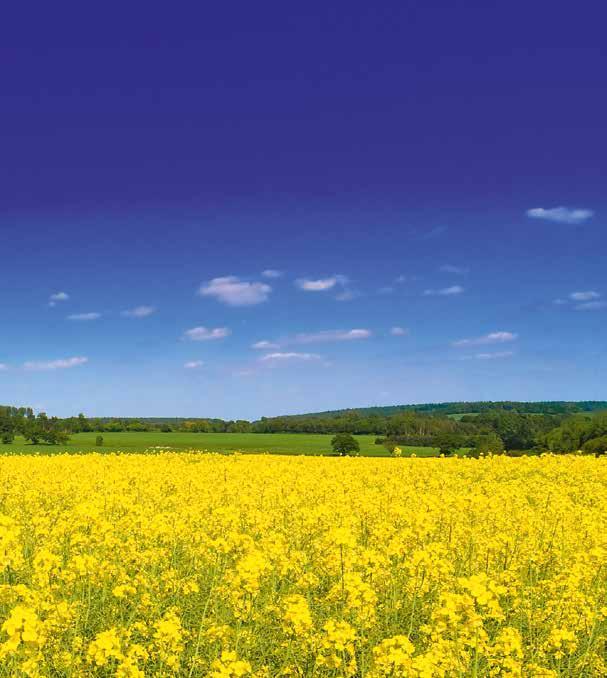







There are a plethora of adverts and magazine articles urging us all to get a “bikini body”, or “beach ready”, it can only mean one thing - no not that we are fat (although we may be!) but that…
I’m of the opinion that donning a swimming cossie, or, in the case of a man, swimming trunks, automatically makes one beach ready, but I admit that looking a little more svelte in a bathing suit would probably be something to aim for. Looking back to childhood, I remember those carefree days of little bikinis, rubbish suncream (and the inevitable resultant sunburn) buckets, spades, fishing nets for the rock pools, picnics on the beach (and sand in the sarnies). I recall running about, wave jumping, kite flying, sandcastle building, scrambling over rocks, picking up crabs and shells…we were active ALL. THE. TIME.
We weren’t a family that could afford to take package holidays to the Costa’s, and neither were most of our friends and family. Our holidays were to places like Devon, Cornwall, the Yorkshire coast, and sometimes…Skegvegas (Skegness to the uninitiated).
These days it is more common to take a flight overseas and flake out on a sun lounger during our annual holiday.
We stick our earbuds in rather than listening to the sounds of the sea, the wind, and the seabirds. Shared picnics are replaced with individual portions of some fast-food or other.
And exploring our surroundings inevitably ends up with a pint (or three) in a beachside bar.
Holiday destinations and activities are, of course, personal choices but I can’t help but feel that along the way we have lost some of the sheer joy of simply BEING at the seaside. It isn’t (or shouldn’t) be about where you go and how much it costs you to get therebut about the memories you make.
I wonder how many kids remember WHERE they went on holiday when they were small? Does it matter if it was Morecambe Bay or The Maldives? My guess is that all they will recall is being with the people they love…mum and dad, brothers and sisters…and what they DID.
In these days of stretched finances, any kind of trip away from home, especially with children, could be out of reach for some people - so why not create a “holiday AT home”?
• Pick a week (or two) and eat your favourite “holiday” foods from around the world.
• Set up a tent in the garden (borrow one if you can) and “pretend” you’re camping (you can always go back in the house, but the kids will enjoy it!).
• Have LOTS of family time, play games, run around - STAY AWAY FROM THE TV!

• If funds allow, organise a couple of day tripslook out for special family passes/offers.
• Head out into the countryside, or even just your local park.
Make memories, not debts on your credit cards.













After meeting secretly in Mr Lockyer’s house, the first members met at a small meeting house on Market Street/Church Street belonging to Mr Allwood, who became their Minister. The Independent Chapel was replaced by a chapel on King Street. A stone in the present church identifies the old “Ebenezer Church” (on King Street) as being built in 1743 and extended in 1835. It later became the Congregational Church but was demolished with the extension of the marketplace in 1906. With the Council wanting the marketplace enlarging, they paid compensation of around £2000 for the purchase of it and £38 5s towards the land where the present church was built.




Initially, Congregationalists began a school in 1804, and a day school in 1836. While the new High Pavement Church was being built, members worshiped in the schoolroom built circa 1892 next to where the church building was being erected. Builders of the church were Greenwoods of Mansfield. The foundation stone was laid in 1905 by James Alliott and the Church was opened on 4th April 1906 by Mrs Alliott of The Park, Nottingham. The organ, built by Keats
of Sheffield, was installed the following year. Part of the cost (£200) was covered by the Carnegie Trust. In 1907, the area around where the church was built, was planted with many trees.
As the Congregational Church grew, in 1913, there was a woman’s own and sewing class which shows more women were becoming interested in the fellowship of the church. Another Congregational (Mission) Church was built in Chatsworth Street, they had a Young Peoples Guild.

The High Pavement Church became the United Reformed Church on 13th October 1972. This was when The Congregational Church joined together with the Presbyterian Church to form the United Reformed Church. Old names sometimes tend to stick around a while, so occasionally you might hear it mentioned as the Congregational because of its roots.
The United Reformed Church has the oldest non-conformist congregation in Sutton, having been established in 1651.


In 1977, commemorating the Silver Jubilee of the Queen, an exhibition featured various stands, among them examples of crochet work by Daisy Radford and a model railway exhibition by the local Elizabethan Railway Society.
A welcoming church for all ages, and well worth a visit.
From supply only to full installation we offer the full package. Our experienced and knowledgeable design teams are here for you, offering a full, free of charge planning and design service. If you’re after a bathroom or kitchen we are serious about creating the best design possible to suit your budget.














































Robert Harris doesn’t write boring books. His latest, Act of Oblivion, takes true events from the 17th century and turns them into a clever, tense and thoroughly modern thriller which is a masterclass in storytelling.
If you’re looking for a tale to grip you on the beach or chilling on your staycation this might just fit the bill.

His stories always have a fair bit of intellectual weight but they never fail to entertain and grab your attention. This one involves a manhunt across continents for two men responsible for the execution of King Charles II.
It’s full of political intrigue and might even make you think you could be tempted to do a bit of historical research into the period yourself. And there are some interesting and amusing present-day parallels to be trawled for. But Harris manages always to humanise his characters, giving the reader sometimes teasing insights into what makes his protagonists tick and leaving us to make connections - always fun.
Good immersive reading. He does write well.

















Pitcherwits® are crossword puzzles where some of the clues are in pictures. Sound easy? It’s not called “Pit-your-wits” for nothing! The mixture of cryptic and picture clues, combined with Professor Rebus’ unique sense of humour, will keep you entertained for hours.

Across
7 She’s ‘L.N.’ so to speak! (5)
8 A rota designed for red vessel (5)

14 Sunlight said to lift (5)
15 Plead a cause that’s faded (5)
Down
2 Lute played around the heart of England for the net (5)
3 Managed and kept going (3)
5 It’s a mistake to follow a trial (5)
12 Give a view from a Chopin extract (5)
13 “Gotta run” from cowgirl. However, I’ll do it (5)

15 Pale violet colour beginning to look like plastic (3)
9 Charles to cart off stuff? That’s a bit thick!
11 Solution’s a contradiction for you! (5,6)
16 It’s sad to play a hymn with a ‘cello (10)
ANSWERS FOR LAST MONTHS
This puzzles has been devised by the brilliant Professor Rebus. For more of his puzzles visit www.pitcherwits.co.uk






















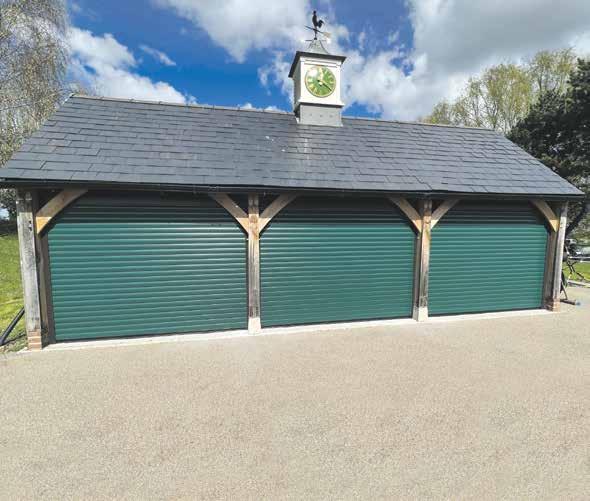


I wrote previously about the Peak’s recovering population of starlings, both those breeding in local woods and gardens, and the flocks of feeding birds on the moors and bogs in late summer, and also the wintertime murmurations. I am re-visiting this species because I was blown away by the stunning springtime plumage of the breeding male birds. For most people, the starling is probably a smallish, dark, or even primarily black bird and often viewed in fast-moving flocks. However, up-close in good sunlight these birds are outrageously colourful with a range of multi-coloured metallic sheens from green, to purple and blue, and gold. As a very young birdwatcher I only had two field guides, the ‘Observer’s Book of British Birds’, and the 1930s, Edmund Sandar’s ‘Bird Book for the Pocket’. Images in the former were mainly black and white, and in the latter, were colour but rather lacking in finesse. I recall spotting my first starlings in bright sunlight on a rooftop and the only bird that had a description and image matching what I saw turned out to be a kingfisher. I knew this was wrong, but my bird appeared to be blue and purple with a shimmering sheen. Well, it wasn’t a kingfisher but a starling. Indeed, at that time river pollution had wiped out most of the local kingfishers and it would be another ten years before I saw one for real!
Starlings went through a major dip in numbers some years ago, but seem to have recovered well more recently. Re-wetting the moors and bogs, difficult in drought years, is a big help for summer-feeding





starling flocks. The birds feast on cranefly larvae (leatherjackets) emerging from wet moors, grasslands, and bogs, so projects like ‘Moors for the Future’ are a big help in this. On a good, wet moor there may be more biomass of cranefly larvae feeding on plant roots underground than there are for example, sheep grazing above ground. These insects emerge en masse in midsummer and are targeted by starlings and by red grouse too.
This is a bird which local people can help through things like garden feeders. Starlings love dried mealworms for example, and imaginative use of feeders filled with these will act as magnets to flocks of them that will descend excitedly and noisily to become a feeding frenzy. Once the birds are used to the feeders being there, then they will return in numbers. They like fat-balls too, but mealworms are their food of choice.
A final confusion with starlings is when the young birds are around during the mid and late summer. Their plumage varies dramatically from the adults, so these very approachable youngsters are highly visible but so very different from their parents that people get rather confused. Of course, the other interesting behaviour exhibited by starlings is their uncanny ability to mimic other bird songs and calls. I remember rushing from my parents’ house to try and spot a green woodpecker I could hear ‘yaffling’, but only to find a starling doing a perfect impression. Similarly, a curlew flying over the house turned out to be another starling. You can actually tell where the starlings have been feeding from their calls based on the birds they associate with, such as a green woodpecker on open heathland, a curlew on the wet moors, or an oystercatcher or redshank on a seashore!

From garden bars, home offices & studios, to garden gyms and chill out spaces, Cabin Master design, deliver & install bespoke garden room solutions throughout the UK. Offering the full end-toend service, including fully lined and insulated buildings, base/ foundations, electrics, flooring and painting, bringing you that much needed extra space you can use all year round.


So, if you’re searching for the perfect garden room, Cabin Master are the experts! Their factories in Derbyshire manufacture your building to order and their 10 year guarantee gives you great peace of mind.

Call us on: 0115 932 8888
www.cabinmaster.co.uk
10 year manufacturer’s guarantee
Delivered and installed by our trained fitting teams
Over 20 years in business
Manufactured in Derbyshire, UK

Visit our open air, dog friendly show site:
Cabin Master Villiage, 251 Toton Lane, Stapleford, Nottingham, NG9 7JA





Top Tip:
A lot of July gardening is about maintenance – and enjoying the fruits of your hard work.

In the flower garden container plants will benefit from liquid feeds on a regular basis – usually weekly. You can cut back growth on hanging baskets if they’re starting to look a bit straggly. This will revive the plants and encourage new growth, but do always give a feed after the chop to help them get over the shock. It maybe put a short temporary stop on the plants but will keep them going much longer over the summer.
In the veggie area ensure your beans have plenty of water so the seed pods will set. Beans and tomatoes can both be stopped at this stage, so the growth can go into the existing fruit and give you a better chance of getting a good crop. Less is sometimes more. With beans take off any growth beyond the top of the growing cane. With cordon tomatoes cut to the leaf beyond the fourth truss. If you’ve got bush tomatoes they can be left to grow.
Going away on holiday can be stressful for houseplants. It’s an idea to move them into a cool room and away from windows. If you’re away for more than a few days try wicking. You can buy capillary wicking matting from garden centres. Fill a water container, - anything will do. Put one end of the wick into the container and the other into the plant pot soil and the plant will draw down water as it needs it. Obviously this will work with several pots if you place them round the container. Alternatively find a nice neighbour!
Top tip: Cut back hardy geraniums and delphiniums now for another late flowering.











